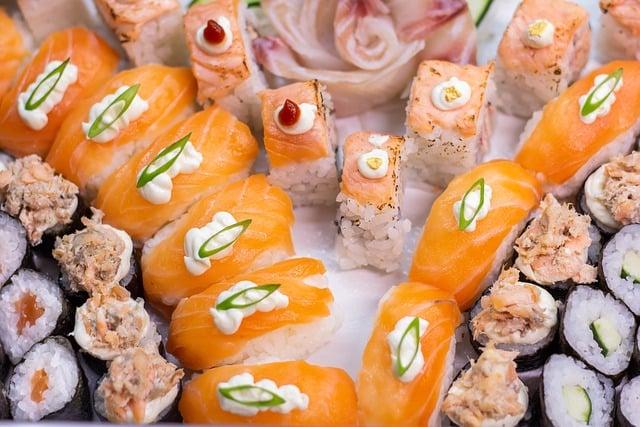Once upon a time in a cozy little village, there lived a curious cat named Whiskers. One sunny afternoon, Whiskers wandered into the local market, drawn by the delightful scents wafting through the air. He sniffed at fish, chicken, and even a bowl of fresh vegetables. But what should a cat eat?
As he pondered, an old wise owl perched nearby hooted, “A balanced diet, dear Whiskers! Fresh meat, a sprinkle of kibble, and the occasional treat will keep you spry!” With newfound knowledge, Whiskers pranced home, ready to feast on a meal fit for a feline king.
Table of Contents
- Understanding Feline Nutritional Needs for Optimal Health
- The Role of Protein and Essential Nutrients in a Cats Diet
- Exploring Wet vs. Dry Food: Which is Best for Your Cat?
- Homemade Cat Food: Benefits, Risks, and Recipes to Consider
- Q&A
Understanding Feline Nutritional Needs for Optimal Health
When it comes to feline nutrition, understanding the unique dietary requirements of cats is essential for their overall well-being. Unlike dogs, cats are obligate carnivores, meaning their bodies are designed to thrive on a diet primarily composed of animal protein. This fundamental difference highlights the importance of incorporating high-quality protein sources into their meals. A balanced diet should include:
- Meat: Chicken, turkey, beef, and fish are excellent sources of protein.
- Organ meats: Liver and heart provide essential vitamins and minerals.
- Animal-based fats: These are crucial for energy and healthy skin.
In addition to protein, cats require specific nutrients that are often found in animal tissues. For instance, taurine, an amino acid vital for heart and eye health, is predominantly found in meat. Furthermore, arachidonic acid, a fatty acid necessary for skin and coat health, is also derived from animal sources. To ensure your feline friend receives these essential nutrients, consider the following:
- Commercial cat food: Look for brands that list meat as the first ingredient and are formulated to meet AAFCO standards.
- Homemade diets: If preparing meals at home, consult with a veterinarian to ensure nutritional balance.
- Supplements: In some cases, adding specific vitamins or minerals may be beneficial.
Hydration is another critical aspect of feline health that often goes overlooked. Cats have a low thirst drive and may not drink enough water, especially if they consume dry kibble. To promote adequate hydration, consider incorporating wet food into their diet, which can provide additional moisture. Additionally, providing fresh water daily and considering a pet water fountain can encourage your cat to drink more. Remember, a well-hydrated cat is a healthier cat.
- Wet food: Offers higher moisture content and can be more palatable.
- Water sources: Ensure clean, fresh water is always available.
- Broth or homemade soups: Can be a tasty way to increase fluid intake.
The Role of Protein and Essential Nutrients in a Cats Diet
When it comes to feline nutrition, protein stands out as a fundamental building block for a cat’s overall health. Cats are obligate carnivores, which means their bodies are designed to thrive on a diet rich in animal-based proteins. These proteins provide essential amino acids that are crucial for various bodily functions, including muscle development, immune response, and the production of hormones. Without adequate protein, a cat may experience muscle wasting, weakened immunity, and other health issues.
In addition to protein, essential nutrients play a vital role in maintaining a cat’s well-being. These nutrients include vitamins, minerals, and fatty acids that support various physiological processes. For instance, taurine is an amino acid that is critical for heart health and vision, while arachidonic acid is a fatty acid necessary for skin and coat health. A balanced diet ensures that cats receive these nutrients in the right proportions, promoting optimal health and longevity.
Moreover, the source of protein is equally important. High-quality animal proteins, such as chicken, turkey, and fish, not only provide the necessary amino acids but also come with additional nutrients that support a cat’s health. It’s essential to avoid low-quality fillers and by-products that can compromise the nutritional value of a cat’s diet. Instead, look for foods that list real meat as the first ingredient, ensuring that your feline friend receives the best possible nutrition.
Lastly, hydration is often overlooked but is crucial for a cat’s diet. Cats have a low thirst drive and may not drink enough water, especially if they consume dry kibble. Incorporating wet food into their diet can help increase their moisture intake, supporting kidney function and overall health. A well-rounded diet that includes both protein and essential nutrients, along with adequate hydration, is key to keeping your cat happy and healthy.
Exploring Wet vs. Dry Food: Which is Best for Your Cat?
When it comes to feeding your feline friend, the choice between wet and dry food can be a puzzling one. Each type of food has its own set of advantages and disadvantages, making it essential to consider your cat’s individual needs and preferences. Wet food, often seen as a gourmet option, is typically higher in moisture content, which can be beneficial for cats that may not drink enough water. This added hydration can help support urinary tract health and overall hydration levels.
On the other hand, dry food offers its own unique benefits. It is generally more convenient to store and serve, making it a popular choice for busy cat owners. Additionally, dry kibble can help with dental health by reducing plaque and tartar buildup as your cat chews. Many owners appreciate the longer shelf life of dry food, which can be a practical consideration for those who prefer to buy in bulk.
When evaluating the nutritional content, it’s important to look for high-quality ingredients in both wet and dry options. **Protein** should be a primary ingredient, as cats are obligate carnivores and require a diet rich in animal-based proteins. Additionally, consider the presence of **essential fatty acids**, **vitamins**, and **minerals** that contribute to your cat’s overall health. Always check for any fillers or artificial additives that may not provide any nutritional value.
Ultimately, the best choice may not be a strict adherence to one type of food over the other. Many cat owners find success in a **mixed feeding approach**, combining both wet and dry food to provide a balanced diet. This method can cater to your cat’s hydration needs while also offering the dental benefits of kibble. Observing your cat’s preferences and health responses can guide you in making the best decision for their dietary needs.
Homemade Cat Food: Benefits, Risks, and Recipes to Consider
Creating homemade cat food can be a rewarding endeavor for pet owners who want to ensure their feline friends receive the best nutrition possible. One of the primary benefits of preparing meals at home is the ability to control the ingredients. This means you can select high-quality proteins, fresh vegetables, and essential nutrients tailored to your cat’s specific needs. Additionally, homemade diets can be particularly beneficial for cats with food allergies or sensitivities, allowing you to avoid common allergens found in commercial cat foods.
However, it’s crucial to approach homemade cat food with caution. Cats have unique dietary requirements, including specific amino acids, vitamins, and minerals that must be included in their diet to maintain optimal health. A poorly balanced homemade diet can lead to nutritional deficiencies or excesses, which may result in serious health issues over time. Consulting with a veterinarian or a pet nutritionist before making any significant changes to your cat’s diet is highly recommended.
When considering recipes for homemade cat food, it’s essential to incorporate a variety of ingredients to ensure a balanced diet. Here are some components to include:
- High-quality protein sources: Chicken, turkey, fish, or beef.
- Healthy fats: Fish oil or chicken fat for omega-3 and omega-6 fatty acids.
- Carbohydrates: Small amounts of cooked rice or sweet potatoes.
- Vitamins and minerals: Supplements or specific vegetables like carrots or peas.
To get started, here’s a simple recipe to consider: Combine cooked chicken (shredded) with a small amount of cooked carrots and peas, then mix in a fish oil supplement for healthy fats. Ensure the mixture is well-blended and served in appropriate portions based on your cat’s weight and activity level. Remember to introduce any new food gradually to avoid digestive upset, and always monitor your cat’s health and behavior for any changes after transitioning to homemade meals.
Q&A
-
What type of food is best for my cat?
The best food for your cat typically includes:
- High-quality protein: Look for meat or fish as the first ingredient.
- Balanced nutrients: Ensure it contains essential vitamins and minerals.
- Moisture content: Consider wet food for hydration, especially if your cat doesn’t drink much water.
-
Should I feed my cat dry or wet food?
Both dry and wet food have their benefits:
- Dry food: Convenient and helps with dental health.
- Wet food: Higher moisture content, beneficial for hydration and often more palatable.
A combination of both can provide a balanced diet.
-
Can I give my cat human food?
Some human foods are safe for cats, while others are harmful. Safe options include:
- Cooked meats: Chicken, turkey, and fish without seasoning.
- Certain vegetables: Carrots and peas in moderation.
Avoid foods like chocolate, onions, and garlic, which are toxic to cats.
-
How much should I feed my cat?
The amount of food depends on your cat’s age, weight, and activity level. General guidelines include:
- Kittens: Require more frequent meals due to their growth.
- Adult cats: Typically need 2-3 meals a day.
- Weight management: Consult your vet for specific portion sizes based on your cat’s needs.
a balanced diet is key to your cat’s health and happiness. By understanding their unique nutritional needs and preferences, you can ensure your feline friend thrives. Remember, a well-fed cat is a contented companion!

大家好,我是彼得潘,專業的手法身體治療師。我喜歡探索和研究各種主題,並透過與人工智慧的合作分享專業、實用、有趣的文章。我們定期進行人工審核,以確保內容的準確性。如果您發現文章中有任何不準確的地方,請隨時與我們聯繫,我們會及時糾正。您可以透過 [email protected] 與我們聯繫。



